(The Center Square) – The U.S. Centers for Disease Control and Prevention spent $85 million on a grant program requiring public schools to start Gay-Straight Alliances, public documents show.
According to a notice of funding report for a grant offered by the CDC, the federal agency has a total of $85 million to spend over a five year period from 2018-2023 with a twelve month budget period.
To access that funding, a school must apply for the federal grant. Once a school is deemed eligible, the school can be awarded anywhere from $12,000 to $350,000 for the program.
For schools to be eligible for the grant, they must fulfill all of the required activities listed in the program guidance document and cannot opt-out of those requirements.
According to the document, one of the required activities that schools cannot opt out of requires the implementation of student-led clubs supporting LGBT youth, usually known as Gay-Straight Alliances.
“A GSA is a student-led club, typically run in a middle or high school, which creates a safe space for students to socialize, support each other, discuss issues related to sexual orientation and gender identity and expression, and work to end homophobia and transphobia in their school and/or broader community,” the CDC said. “To implement this activity, [local education agencies] will first need to determine which schools have GSAs. LEA can then create and implement a plan for establishing GSAs in schools that do not already have them and strengthening GSAs in schools that do (see key consideration below on enhancing existing GSAs).”
The CDC lists the organization known as GLSEN as a potential resource to help with this activity, which encourages the use of gender neutral language.
“When addressing a group of people, make sure to use gender-neutral language,” GLSEN said. “For example, instead of saying ‘Welcome, ladies and gentlemen,’ say ‘Welcome, everyone.’ You should also use gender-neutral pronouns when referring to a group or when addressing someone whose pronouns you do not know.”
A second activity required of schools is that schools educate all their staff on how to support LGBT students.
“Professional development (PD) delivered to teachers and school staff annually should address fundamental knowledge about: the concepts of sexual orientation and gender identity, including appropriate language, health risks faced by LGBT youth, effects of the school environment on the health of LGBT youth, supportive school policies and practices (e.g., GSAs, safe spaces, inclusive curricula), the unique needs of transgender and gender diverse students,” the CDC said.
The CDC also says that schools must oppose beliefs that are against the LGBTQIA+ ideology.
“PD should thus involve critical reflection that helps school staff recognize and challenge both individually held and broader normative beliefs about sexuality and gender identity that can contribute to a negative school environment for LGBT youth,” the CDC said.
To help schools conduct this activity, the CDC lists various resources that can be referenced for learning materials and further information on the subject. One of the listed resources is titled “Gender Spectrum. Schools in Transition: A Guide for Supporting Transgender Students in K-12 Schools,” and says that transgender students should be called by the pronouns they identify with, even if they fall outside the gender binary.
“It is important to note that a growing number of gender-expansive youth are identifying themselves outside the gender binary, and many use gender-neutral pronouns,” the document said. “While it may be more difficult to adapt to gender-neutral pronouns, it is still important to do so in support of the student.”
Tyson Langhofer at Alliance Defending Freedom, a legal organization, said that it would go against one’s Constitutional rights if schools were to attempt to force their staff to use an individual’s preferred pronouns.
“Any policy that mandates teachers to use chosen pronouns by students that would violate both their free speech rights and their free exercise rights under the First Amendment, and also sometimes under their state constitution, or state religious freedom restoration act laws,” Langhofer said. “When you say somebody can choose their own pronoun that means you are by definition expressing the message that gender is fluid and can be chosen by an individual rather than it being immutable based upon your biological characteristics.”
The resource also encourages schools to allow transgender students to enter bathrooms and locker rooms with the gender they identify with.
“Providing transgender students with access to the restrooms and locker rooms that match their gender identity is yet another way that schools adjust to meet students’ individual needs,” the document said. “Generally, there is no reason to doubt the sincerity of a student who asserts a transgender identity, and schools should accept the student’s identity without imposing additional requirements.”
In addition to the two required activities, the program includes two additional activities that schools may engage in but are not required to do so.
One of the listed additional activities says schools can make an effort to change existing instructional programs to include LGBT youth, which includes selecting educational material that uses non-gendered language so as not to make transgender students feel out of place.
“LEA may systematically review and select HIV, other STD, and unintended pregnancy prevention teaching materials (e.g., textbooks, worksheets, and student learning activities) that integrate gender-neutral language, examples, and terminology, and representation from LGBT youth populations,” the CDC said. “LEA can develop sexual health instructional programs that incorporate LGBT individuals, history, and events into teaching materials. Such strategies have been shown to increase LGBT youth connectedness and feelings of inclusion with their peers and school community.”
A second additional activity in the program asks schools to disseminate resources specifically relevant to parents of LGBT students.
“LEA can incorporate specific considerations for LGBT youth in dissemination materials about parental monitoring or parent-adolescent communication,” the CDC said. “They can also develop materials specifically about parental support of LGBT youth. Schools should disseminate such resources in a way that avoids targeting LGBT students and families and potentially disclosing students’ sexual orientation or gender identity.”
For this activity, the CDC links a document titled ”Our Children: Questions and Answers for Families of Lesbian, Gay, Bisexual, Transgender, Gender-Expansive and Queer Youth and Adults” by the organization known as PFLAG as a resource, which encourages parents to use their child’s preferred pronouns and help with their gender transition without questioning it.
“For those who use pronouns – and not all people do – they are not preferred, they are essential,” PFLAG said. “Pressuring a child to conform to more stereotypical gender expression or behavior can cause harm.”
The 1807 program is a grant offered to public schools for HIV/STD prevention as well as unintended pregnancies.
“The Centers for Disease Control and Prevention (CDC) has funded Program 1807 to improve the health and well-being of our nation’s youth by working with education and health agencies and other organizations to reduce HIV, STDs, unintended teen pregnancy, and related risk behaviors among middle school and high school students,” the CDC said.
The program is said to be based on both scientific literature and expert input regarding methods most effective for reducing the risk of HIV and other STDs among high school and middle school students.
The program includes three overall components: Component 1, school based surveillance; component 2 school based HIV/STD prevention; and component 3 technical assistance and capacity building. Component 2 is the main focus of this article.
Each strategy has detailed requirements that schools have to follow in order to receive the grant, as well as additional optional opportunities that are optional.
“Each Component 2 strategy includes required activities intended to achieve short-term and intermediate outcomes over the five-year project period,” the CDC said. “As appropriate, additional activities that may support progress toward outcomes are also described.”
One of the three strategies outlined by the program’s guidance focuses on safe and supportive environments (SSE), and includes many requirements regarding the incorporation of LGBTQIA+ material and activities.
This section is said to help establish protective factors both inside and outside the classroom to help with facilitating discussions on how to prevent HIV/STD prevention.
“In addition to directly contributing to HIV and other STD prevention, creating SSEs establishes a context necessary for the other approaches (SHE and SHS) to be effective,” the CDC said. “Students who do not feel safe and connected to school may be more likely to be absent and thus less likely to receive SHE and school-based support accessing SHS. Even for students in school, SHE delivered in the context of a poorly managed classroom will likely be ineffective.”
This chapter includes activities, discussed above, centered around LGBTQ students as they are purportedly harassed more than non-LGBTQ students.
“LGBT students are more likely to be bullied at school than their heterosexual and cisgender peers,” the CDC said.
Currently this grant is being offered to 28 school districts across the country, spanning across eleven blue states and six red states.
It is estimated that the program reaches over a million students nationwide.



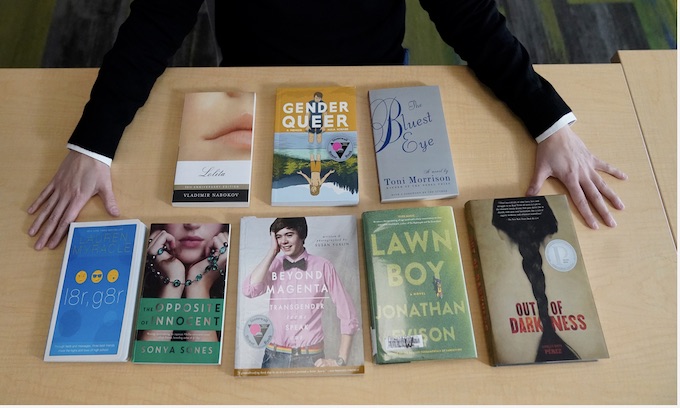
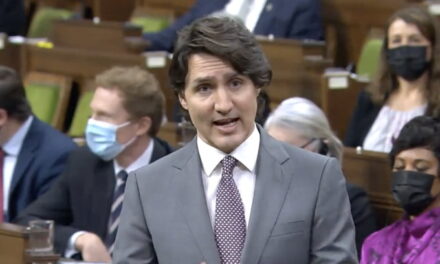
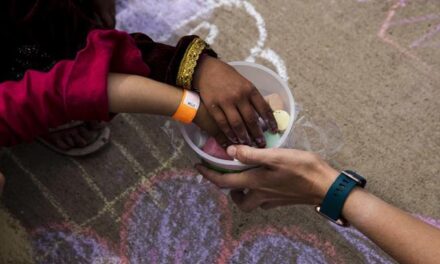
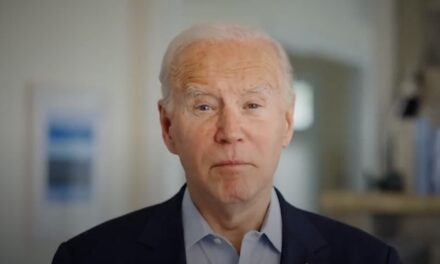
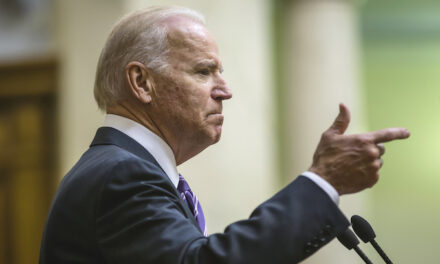







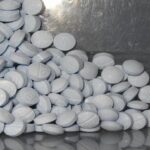
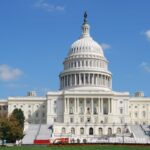


the federal agency has a total of $85 million to spend
Correction the agency has $85 million in TAX PAYER DOLLARS to spend.
This is another example of the disgraceful, unethical, immoral, socialist Democrat Party’s ruled government cult forcing their sexually perversions upon every person in the U.S..
LGBTQ’s are not a race, color, ethnicity, nationality, religion or gender.
It is a chosen sexual perverted lifestyle. It is a perversion that is taught by other sexual perverts.
Ever wonder why the LGBTQ’s want to start teaching their perverted sexuality in kindergarten??
AND what the heck is the CDC even doing, getting ito ‘funding school AFTER CLASS clubs??” How is that fighting diseases, or are they ACKNOWLEDGING THE LGBT community is finally a CANCER On society??
With the COVID declared over by Joe, any and all unspent funds should be retuned to the treasury, any mispent funds should put people in jail.
That’s what SHOULD happen, but like always, Govt agencies WASTE IT, and NO ONE ever seems to get punished…
Student organizations are usually a result of the students initiating a request, the ones who see a need for whatever inspires them. This sound more like a top down creation need I say recruitment scheme away from parental input.
Why do I have to learn about something I already know. Why do our children have to learn about something we already know. Is it going to make life that much better to have LGBT brown shirts pushing others around now that they have the law behind them.
I wish my gay friends would stand up and say enough but they remain silent.
The CDC is another group under the Democrat Crime Organization Tyranny that needs to be defunded and dismantled by the Republicans next year.
Funny but I thought only congress could make laws. If this goes into effect wonder how long it will take for a group of parents to sue the government ? Seems like the left wing liberals are trying to take control of the kids away from the parents, that needs to be stopped before it ever gets started.
It’s already started that’s why you have public schools failing kids that refuse to say 2+2= 5.
Before you libtards start saying that’s untrue. I know someone personally that was held back for that very reason.
The Guilty state was california. (The lack of capital letters is a show of contempt.)
Absolutely!
This is a reply to Wesley Waldrep.
ALL of these orgs, that are NOT EXPRESSLY Called for by our constitution, need to get GUTTED!
Would someone–anyone–please explain how homosexuality is part of the charter for “Disease Control and Prevention”?
It’s not. It’s another example of another Tyranical government overreach by brain dead dictator wannabe’s.
ITS not. BUT SINCE when has that stopped the dems!!
Any so-called school establishing these perversions should lose any and all accreditations of faculty and facilities permanently. The entire faculty should be charged with producing and selling child porn.
I hope Congress can defund the CDC after we win.
This further supports my very negative opinion of the CDC – a worthless, pointless gubment organization. I have NEVER heard any medical professional reference the CDC during discussions about patient treatment/care. Nobody has ever said “Let’s see what the CDC says on this”. The CDC is the epitome of a wasteful, careless entity.
Cultural Marxism is using this program to undermine marriage, family, education, and local government.
The CDC is nothing more than the Center for Depression and Confusion. It used to be that if you wanted to see something weird you could buy a ticket at your local county fair and see a freak show with bearded women with two heads etc. These shows have now been put out of business thanks to local city libraries, schools, municipalities, and other enterprises that offer free attendance to drag-queen performances and innumerable gay parades throughout the year.